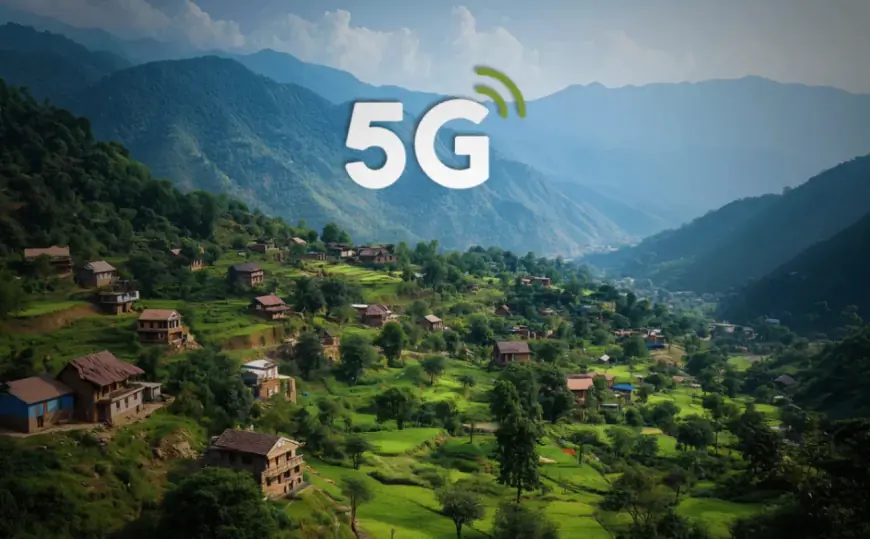Why 5G Struggles in Rural Areas – Key Barriers and Solutions
Learn why rural areas face delays in getting 5G, the main technical and financial challenges, and how providers like Ubifi offer reliable internet today.

5G in Rural Areas: Understanding the Challenges and Finding Solutions
When people hear about 5G, they imagine super-fast internet, crystal-clear video calls, and instant downloads. In big cities, these benefits are slowly becoming reality. But due to the challenges of 5G in rural areas, many rural communities still feel left behind.
The delay isn’t just about companies taking their time. There are real, practical reasons why rural areas face slower 5G expansion. Let’s break down the main challenges and explore how services like Ubifi are already helping rural customers stay connected.
1. Rural Areas Need More Towers
5G works best when there are many small cell towers close together. In cities, these can be placed on rooftops, streetlights, or utility poles. But in rural areas, homes are farther apart, and there are fewer places to install towers.
The faster types of 5G use high-frequency signals that can’t travel far. That means a provider would need to install far more towers to cover a rural area compared to a city—raising costs and slowing progress.
2. Backhaul Infrastructure is Limited
Every 5G tower needs a strong connection to the internet backbone, usually through fiber optic cables. In rural areas, running fiber can be expensive and time-consuming because of the long distances between towns and the need for digging or special permits.
Even if a tower is installed, without proper backhaul, it won’t deliver the full benefits of 5G speeds.
Where Ubifi fits in: Ubifi bypasses the need for extensive fiber installation by using existing LTE and low-band 5G networks to deliver internet now, rather than years later.
3. Terrain Makes Coverage Harder
Hills, trees, and mountains can block or weaken 5G signals. While older networks could handle some interference, high-frequency 5G is more sensitive to obstacles. This means rural areas with dense forests or uneven terrain may need even more towers or alternative technologies to ensure coverage.
4. High Costs and Lower Profits
Building new 5G infrastructure isn’t cheap. It involves buying land or leasing space, setting up equipment, and connecting it to the internet backbone. In rural areas, where there are fewer customers, the cost per household is much higher.
Because the return on investment is slower, providers often focus on cities first, leaving rural communities to wait.
5. Rural Rollouts Depend on Incentives
Government programs and funding can speed up rural 5G projects, but these programs take time to plan, approve, and implement. Until such support reaches a specific area, telecom companies may prioritize urban markets.
Ubifi: A Practical Solution for Rural Internet Today
While waiting for full 5G coverage, rural residents can still enjoy high-speed internet through Ubifi. Ubifi uses fixed wireless technology to deliver fast and reliable internet using existing cell networks.
Benefits of Ubifi for rural customers:
-
Works without waiting for new fiber lines or towers.
-
Provides unlimited data for streaming, work, and school.
-
Quick setup with no long construction delays.
-
Wide coverage, even in remote locations.
For many rural households, Ubifi bridges the gap between older connections and future 5G networks.
What Could Speed Up Rural 5G Deployment?
Several strategies can make rural 5G a reality sooner:
-
Using low-band and mid-band 5G for better range and balanced speeds.
-
Government funding to support rural builds.
-
Sharing towers between providers to cut costs.
-
Combining 5G with satellite internet for broader coverage.
-
Encouraging public-private partnerships for infrastructure projects.
Conclusion
5G will eventually reach rural areas, but it’s a long process involving cost, geography, and infrastructure upgrades. While waiting, solutions like Ubifi ensure people don’t have to settle for slow internet.
By offering high-speed connections today, Ubifi keeps rural families, schools, and businesses online—helping communities thrive until 5G fully arrives.
FAQs About Challenges of 5G in Rural Areas
Q1: Why is rural 5G slower to roll out?
Because rural areas require more towers, backhaul infrastructure, and face higher costs per customer.
Q2: Can 5G cover remote rural areas?
Yes, but lower-frequency 5G works better for range, while high-frequency 5G struggles over long distances.
Q3: What’s the best internet option for rural areas right now?
Fixed wireless services like Ubifi, LTE internet, or satellite internet are currently the most practical.
Q4: How do hills and forests affect 5G?
They can block or weaken signals, requiring more infrastructure for strong coverage.
Q5: When will all rural areas get 5G?
It depends on investment, government programs, and local infrastructure—some may wait years.
What's Your Reaction?
 Like
0
Like
0
 Dislike
0
Dislike
0
 Love
0
Love
0
 Funny
0
Funny
0
 Angry
0
Angry
0
 Sad
0
Sad
0
 Wow
0
Wow
0

















































